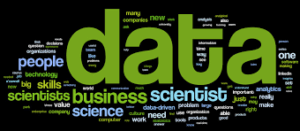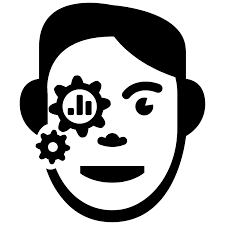The post Is Being a Data Analyst a Step to Becoming a Data Scientist? appeared first on Magnimind Academy.
]]>1- Data Analyst vs. Data Scientist
![]()
The job of a data analyst is to collect, process, and apply statistical algorithms to structured data to derive benefits and help in informed decision making.
Though the goal of a data scientist is similar, a data scientist also possesses robust skills for handling large amounts of unstructured data, potentially processing them in almost real-time. If you’re a data scientist, you’ll find out important information and have the ability to clean and process it, which is then followed by running advanced algorithms on the data, which could have originated from an extensive range of sources. Data scientists also have strong business acumen, intellectual curiosity, storytelling and visualization skills, and a positive attitude toward teamwork.
2- Data Analyst to Data Scientist – The Road to Transition
![]()
Though most data analysts will have a good foundation, it would still take them some time to become a data scientist. This could be from a couple of weeks to some years depending on whether you opt for a data science bootcamp in Silicon Valley or take the arduous route of full-time degrees and programs. A data analyst would need to invest time, effort, and money to develop skills to apply cutting-edge approaches comprehensively on awkward structures and/or large/unstructured data sets.
3- Data Analyst to Data Scientist – Skills Needed for the Transition
![]()
Answering this question is difficult as sophisticated data science projects may have an intricate pipeline with several elements, and mastering all at the same time is impossible. Still, you should hone your skills (as you may have already worked with these technologies as a data analyst) or at least, touch upon a reasonable part of these:
- Data Science languages: Python and R
- Distributed computing: Spark and Hadoop
- Relational databases: PostgreSQL and MySQL
- Non-relational databases: MongoDB
- Machine learning models: Boosted Trees SVM (Support Vector Machines), Regression, NNs (Neural Networks)
- Graph databases: GraphX and Neo4J
- Cloud: AWS/GCP/Azure
- Data Visualization and Webapps: RShiny and D3
- API Interaction: Rest and OAuth
- Specialist domains: OCR (optical character recognition), NLP (Natural language processing), and Computer Vision
To fast-track your transition (from a data analyst to data scientist), you can choose a data science bootcamp in Silicon Valley that has industry leaders as its instructors. With projects, hands-on assignments, and mentorship from your instructors, such a bootcamp will get you trained in the most in-demand skills, tools, and expertise essential to think and work as a modern data scientist. Thus, you can be job-hunt ready faster than waiting for years to complete traditional or full-time classroom courses to get a job in the field of data science.
. . .
To learn more about data science, click here and read our another article.
The post Is Being a Data Analyst a Step to Becoming a Data Scientist? appeared first on Magnimind Academy.
]]>The post Becoming a Data Scientist, Data Analyst, Financial Analyst and Research Analyst appeared first on Magnimind Academy.
]]>Let’s delve deeper to take a look at the different positions that you may consider in order to arrive at a well-informed decision.
1- Becoming a data scientist

Whether you are a student or a professional looking to shift careers, positioning yourself for a data science career could be a smart move. While students can pick up degree courses (which include programs in data science and analytics) run by several universities, professionals may pick up short-term courses conducted by reputed institutes or organizations. They may even take up bootcamps if they are ready to slog it out and don’t mind the intense learning sessions where a lot of information is packed in every session.
It’s important to note here that though a majority of data scientists have backgrounds as statisticians or data analysts, you will also find others coming from non-technical fields such as economics or business. So, just because you aren’t proficient in coding and programming or don’t have an IT background shouldn’t stop you from pursuing a career in data science. If you are wondering how professionals from diverse fields like economics, mathematics, statistics, business, IT, etc. end up in the field of data science and make it work in their favor, you should look closer to find that they all have one thing in common: an ability to solve problems and communicate the well along with an unquenchable curiosity about how things work and even look for problems that others might not have even though of.
Apart from the qualities mentioned above, you’ll also need a rock-solid understanding of the fowling to become a data scientist:
- Statistics and mathematics
- AI and machine learning
- Coding languages like Python and R along with Java, C/C+, or Perl
- Data visualization and reporting technologies
- Databases such as MySQL and Postgres
- Hadoop, Apache Spark, and MapReduce
Additionally, you should be able to able to work with unstructured data, which are undefined content that refuse to fit into database tables. Some examples of unstructured data include blog posts, videos, video feeds, audio, social media posts, customer reviews, etc. Since such data include heavy texts that are grouped together, sorting such data that isn’t streamlined is an extremely tough task. No wonder why unstructured data is often called ‘dark analytics’ due to its complexity.
As a data scientist, it’s mandatory for you to have the skills necessary for understanding and manipulating unstructured data gathered from diverse platforms because this way, you will be able to unravel insights, which can prove to be helpful for informed decision making.
1.1- Typical job duties
![]()
The role of a data scientist doesn’t come with a definitive job description. Here are a few things that are you are likely to handle as a data scientist:
- Collecting a huge quantity of unstructured data, which is then transformed into a more usable format
- Working with a wide range of programming languages such as Python, R etc.
- Leveraging data-driven techniques to solve business-related problems
- Having a rock-solid grasp of statistics, including both Bayesian statistics and classical statistics
- Staying abreast of analytical techniques like deep learning, machine learning, and text analytics
- Collaborating with both IT and business cells and communicating the findings in lucid language to the stakeholders or clients
- Looking for patterns and order in data in addition to spotting trends that can help the bottom-line of a business
1.2- Things to consider before accepting the job offer for the post of a data scientist

Before you accept a data scientist position, there are a few things about the organization that you should assess:
- Does it give data its due value? You should remember that a company’s culture has a significant impact on whether it should employ a data scientist. So, apart from checking how much it values data, you should also see if it has an environment that supports analytics and if it already has data analysts involved. If not, you may be burdened with the job of a data analyst too, which could become tiring and cumbersome soon.
- Does it handle huge amounts of data and have complex issues that it wants to get solved? The organizations that really require data scientists have two factors in common: They deal with massive amounts of data and face complex issues on a daily basis that needs to be solved. You will find these typically in industries such as pharma, finance, etc.
- Is it willing to bring changes? As a data scientist, you would expect that your recommendations are taken seriously and acted upon. You invest a lot of effort and time to find ways, which will let the organization/company you are employed with to function better and improve its bottom-line. In response, the organization/company should be ready and willing to follow through with the results/recommendations of your findings. If not, working in such an environment where your hard work doesn’t come to fruition would be futile.
For some organizations/companies, employing a data scientist to guide data-driven business decisions based could be a leap of faith. So, before you accept the position of a data scientist, make sure the organization/company you are going to be working for has the right attitude and is prepared to make some changes if needed.
2- Becoming a data analyst
![]()
To become a data analyst, you should have a degree in either of these fields
- Computer Science
- Economics
- Statistics
- Mathematics
Additionally, you should have the following qualities:
- Ability to analyze huge datasets
- Experience in data reporting packages and models
- Ability to write all-inclusive reports
- An inclination for problem-solving and an analytical bend of mind
- Attention to detail
- Strong written and verbal communication skills
As a data analyst, your job would include the following (though it won’t be limited to these):
- Gathering and interpreting data
- Spotting trends and patterns in data sets
- Defining new procedures for data collection and analysis
- Collaborating with business/management teams to ascertain business needs
- Evaluating the results
- Reporting these results back to the appropriate stakeholders or other members of the business
2.1- Things to consider before accepting the job offer for the post of a data analyst

Similar to the case of a data scientist, your potential employer should have a conducive work environment and be willing to accept and act upon your findings. At the same time, it shouldn’t confuse the role of a data analyst with that of a data scientist. If it does, taking up the position would mean working on aspects that you aren’t trained in, which would soon start creating problems. Even if it doesn’t, it will overburden you for sure.
3- Becoming a financial analyst
![]()
You will need to have a bachelor’s degree – preferably with a major in finance, economics, or statistics, to become a financial analyst. MBA graduates with specialization in finance too can enter the field as senior financial analysts.
Apart from educational qualifications, you should be proficient in problem-solving, have strong quantitative skills, and be adept in the use of logic along with having good communication skills. Your duties will include crunching data and reporting your findings to your superiors in a concise, clear, and persuasive manner.
4- Becoming a research analyst
![]()
To work as a research analyst, you are likely to need a master’s degree in finance or have CFA (Chartered Financial Analyst) certification in addition to some others licenses or certifications that the job may need depending on which filed you are going to be employed in. you should also have the following skills and personality traits:
- Attention to detail
- Be extremely organized and reliable
- Good with numbers
- An inquisitive, logical bend of mind
- Ability to refine huge amounts of information into particular takeaways
Perhaps you can now see why being a data scientist is the top pick among all these positions.
. . .
To learn more about data science, click here and read our another article.
The post Becoming a Data Scientist, Data Analyst, Financial Analyst and Research Analyst appeared first on Magnimind Academy.
]]>The post Data Scientist is better than Financial Analyst, Data Analyst and Research Analyst appeared first on Magnimind Academy.
]]>1- Who’s a data scientist?
![]()
Even a decade ago, data scientists weren’t a hot property that they have become today. Perhaps the change in their fortunes signals how times have changed. This could be attributed to the massive amount of data that’s getting generated almost every second today. And with the emergence of big data, companies and businesses too have changed their views on how they see data and even the ways they can leverage the pile of data that they have been sitting upon for quite some time now. After all, the data businesses collect these days or the ones their existing and potential customers willingly share via their website, special campaigns, social media accounts, etc. make up a bulky mass of unstructured information. No business worth its salt can ignore or forget this data anymore as it’s nothing short of a virtual gold mine that can bring several benefits their way and give their revenue a significant boost. But it will happen only when someone digs into this pile of massive data and discovers business insights that no one considered looking for before. And this is where the data scientist comes into the picture.
As these people have an intense intellectual curiosity and are deep thinkers, they interpret this data and try to draw useful insights from them. From making new discoveries and asking new questions to learning new things, data scientists are driven their originality and creativity to solve complex problems and indulge in their curiosity constantly. Thus, data scientists don’t just make an observation with the complex reads from data. Rather, they seek to uncover the “truth” that lies hidden underneath the surface. For these professionals, problem-solving isn’t merely a task. Rather, it’s an intellectually-stimulating trip to find a solution. Thus, you will find data scientists designing and building new procedures for data modeling, and production utilizing algorithms, prototypes, predictive models, custom analysis etc to decode data and gather useful insights, which are then presented to tell a story to the stakeholders. These decision-makers can then use this insight to make data-driven, timely decisions that will help them take on challenges, if any, be better prepared to stay ahead of the competition, and even improve their bottom-line significantly. No wonder why Harvard Business Review called data scientist the 21st century’s sexiest job.
Now that you have an overview of who a data scientist is and what kind of role he/she plays, let’s try to find what makes these professionals better than others working with data such as data analysts, financial analysts, and research analysts. But before we do that, it’s important to take a closer look at what roles these professionals play.
2- Who’s a data analyst?
![]()
Along with data scientists, data analysts too are in high demand. Together, they are often called as DSA (data science and analytics) job. According to Forbes, DSA job listings are expected to grow by almost 364,000 listings to touch the mark of approximately 2,720,000. Just like data scientist posts, those for data analysts too aren’t the easiest positions to fill. Perhaps this explains what Forbes says about DSA jobs – they remain open for an average of 45 days, which is five days more than the market average.
The role of a data analyst is the one that people often confuse with a data scientist. It’s true that professionals in both these roles have a similarity as they work with data. Yet, the main difference between them arises based on what they do with the data.
A data analyst’s primary role is to assemble, categorize, and study data to offer business insight. Typically, data analysts are concerned with cleansing, aggregating, managing, and abstracting data in addition to conducting a variety of analytical studies on that data. Here’s a peek into some of these responsibilities that would help you know what they actually mean:
- Cleansing: This refers to the procedure of checking data accuracy and quality by recognizing and then removing biased or incorrect data from a database.
- Aggregating: This is the compilation of information from multiple data sources to organize combined datasets for data processing.
- Managing: This involves planning data processes as well as executing and maintaining them to ensure safe storage of data and information assets.
- Abstracting: It’s the process of removing a dataset’s characteristics to reduce it to a set of essential characteristics, which in turn would help in more efficient data processing.
By leveraging additional software engineering and ML (machine learning) skills, a data scientist builds upon a data analyst’s core competencies. Thus, you will find data scientists actively exploring unique ways to use existing and new algorithmic, statistical, predictive, artificial intelligence (AI), and machine learning (ML) tools and techniques to discover valuable and significant patterns in data and convert these into information for the company or organization.
Perhaps you now understand that though the two job titles and even some roles may be deceptively similar, being a data scientist is better than being a data analyst.
3- Who’s a financial analyst?
![]()
A financial analyst is responsible for collecting and organizing financial information followed by its analysis after which S/he would create presentations and offer recommendations, which will get shared with a company’s clients or the stakeholders.
The primary responsibility of financial analysts is to create financial models that can forecast the result of specific business decisions. To do this the right way, these professionals need to collect a large pile of financial data while also considering factors such as earlier transactions having a similar nature, financial market trends, etc. Based on where a financial analyst works, his/her role can differ a lot. For example, a financial analyst working in an investment bank will be much more focused on helping with deals and mergers while the one working for an insurance company would be more concerned with the risks involved in different lines of insurance, how they would affect premiums, etc.
The difference between a financial analyst and a data analyst is that the former works with large number of datasets that come from a wide range of sources such as customers, operations, safety etc. and analyzing them and turning them into recommendations and takeaways for management or clients. The main difference between a financial analyst and a data analyst is that while the former only works with financial and accounting figures, the latter works with a wide variety of numbers from diverse industries.
Perhaps this gives you a clearer picture of why being a data scientist is better than being a financial analyst.
4- Who’s a research analyst?
![]()
This is a professional who is responsible for researching, examining, interpreting and presenting data related to operations, markets, economics, accounting/finance, customers, and other information related to the field s/he works in. Typically, a research analyst is extremely analytical, quantitative, and logical apart from being adept in handling data.
Almost every industry engages research analysts though they are more commonly found in some specific industries like the financial services industry, retail industry, etc. A broad job category is covered by the research analysts, especially in the areas of operations research, market research, and industry research. The role of an operations research analyst is to study particular aspects of an organization’s business processes and work out means to improve them. For a market research analyst, the responsibilities include studying the markets to help businesses understand what kind of demand exists for services or products. For an industry analyst, the job entails researching on a specific company or specific industry in addition to keeping track of new developments and trends in an industry. In brief, the key responsibility of a research analyst is to research and find ways to improve the operations of the business or company s/he is involved with.
Thus, the role of a research analyst is limited as compared to that of a data analyst. And since it’s better to be a data scientist than a data analyst, you can infer that the post of a data scientist is much more coveted than that of a research analyst.
. . .
To learn more about data science, click here and read our another article.
The post Data Scientist is better than Financial Analyst, Data Analyst and Research Analyst appeared first on Magnimind Academy.
]]>The post What is the Difference Between a Data Scientist and a Data Analyst? appeared first on Magnimind Academy.
]]>While the prefix of these titles may lead many to believe that professionals holding these titles carry out the same functions, it isn’t really so. The job descriptions may look somewhat similar, but there’re key differences between the careers. In this post, we’re going to highlight the individual aspects of both data scientist and data analyst and how they’re related to each other.
1- Difference by definition

A data scientist refers to a professional who analyzes massive sets of data from a business standpoint and is responsible for predicting potential trends, exploring disconnected and disparate data sources, and identifying better ways to analyze information in order to help businesses make accurate and informed decisions.
A data analyst focuses on collecting, processing, and obtaining statistical information out of the existing datasets. They focus on developing methods to gather, process, and organize data to reveal actionable insights for present issues, and establishing the best way to demonstrate this data. Put simply, a data analyst is directed toward solving problems that can obstruct immediate improvements.
2- Difference by responsibilities

A data scientist and a data analyst may share similar job responsibilities to some extent, but some notable differences do exist. Let’s take a look at them.
Data scientist:
- Cleansing and processing of data
- Developing machine learning models and new analytical methods
- Finding new features by exploring the value of data
- correlating disparate datasets
- Identifying new business questions which can add value
- Data visualization and storytelling
- Identifying the root issues of an outcome
Data analyst:
- Analyzing and mining business data to discover patterns and identify correlations from different data points
- Implementing new metrics for identifying not so clearly understood business parts
- Coordinating with the engineering team to collect incremental new data
- Mapping and tracing the data from different systems to find out solutions to a given business problem
- Applying statistical analysis
- Designing and creating data reports to help stakeholders make better decisions
- Identifying partialities in data acquisition and data quality issues
3- Difference by skill sets

While both data scientist and data analyst positions require solid knowledge of mathematics together with knowledge of software engineering, understanding of algorithms and good communication skills, their actual skill sets differ significantly.
Data scientist skills:
- Programming languages like R, Python, SAS, SQL, Hive, Pig, MatLab, Spark, Scala etc
- Data visualization and storytelling
- Distributed computer frameworks such as Hadoop
- Machine learning and deep statistical insights
- Business acumen
Data analyst skills:
- Programming languages like JavaScript, HTML etc
- Data visualization tools such as Tableau
- Data storing and retrieving tools and skills
- Robust exposure to SQL and analytics
- Spreadsheet tools
4- Difference by pay packet

Data scientists earn substantially more money than data analysts. On an average, the starting base salary of a data scientist is around $110,000 while for a data analyst, it stays around $65,000. However, the salary of the latter depends on the type of the analyst they’re – market research analyst, financial analyst, or operations analyst, among others. Learning data science is the first step for these jobs.
5- Difference by job roles

Both the groups are divided further based on their job roles.
- Data scientists are offered job roles like data developers, data researchers, data business and data creative people
- Data analysts are categorized into roles like database administrators, data architects, operations and analytics engineers
Which career is best for you – Data scientist or data analyst?

When you need to determine whether a data scientist or a data analyst career path would be the best for you, how will you proceed? We’ve already talked about the skills that are required to excel in both the positions, but there’re some other key factors that you should consider when choosing one of these two. These include your personal interests, your preferred career path, and your background. When you select the ones, you may know data science in 6 weeks.
1- Personal interests matter a lot

Do you have a keen interest in statistics and numbers? Or, is it computer science and business that keep you excited?
While a data scientist needs to have solid understanding of computer science, statistics, and mathematics, he/she also needs to have good business acumen. Apart from having robust presentation and communication skills, you need to be able to find opportunities, risks and trends in the data if your aim is to become a data scientist. In addition, communicating the findings in easy-to-understand formats should be one your key fortes.
On the other hand, work of a data analyst heavily encompasses programming, statistics, and numbers. They almost exclusively work in databases to reveal data points from complicated and sometimes, disparate sources. Also, a robust understanding of the industry they’re working in is something crucial for a data analyst.
2- Career path holds its fair share too

Where do you want to see yourself in the distant future? Apart from job responsibilities, as the level of values added by data scientists and data analysts differ significantly, so do their compensations.
Data scientists, who’re typically graduate degree holders, usually have advanced skillsets and come with more working experience. They are generally considered to be more senior that data analysts. As a result, data scientists receive healthier pay packets than data analysis professionals. And they can earn a yearly compensation between $110,000 and $163,500.
This compensation range comes down to $77,500 and $118,750 for data analysts. However, as their work encompasses databases mainly, they can increase their seniority and in turn, compensation by learning programming skills that are considered crucial in the domain. Once a data analyst gains substantial experience and acquires an advanced degree, he/she can easily move into better positions with increased compensations.
3- Don’t ignore your background

Though the positions of data scientists and data analysts may look somewhat similar, it’s the background, in terms of both educational and professional, that acts as one of the key factors when it comes to choosing one of them.
For a data scientist, a PhD or Master’s degree in mathematics, computer science, or statistics is desired. Add to it the desired professional experiences like working in statistical computer languages, working with data mining and statistical techniques, creating and working with data architectures, 5 to 7 years of experience in building statistical models and manipulating datasets, experience in using web services, and experience in working with distributed computing/data tools, among others.
At their core, most data analysts require a degree in statistics, mathematics, or business with an analytical bend of mind. Desired experiences usually include working with languages like Python, R etc, and working in agile development methodology etc.
Both the positions of data scientist and data analyst are considered highly coveted in today’s job landscape. You can certainly go for either one. Just be sure to consider the above factors to excel in your chosen trajectory.
Where the roles intersect

Though data scientists and data analysts aren’t two interchangeable roles, they hold a fundamental overlapping point – both of them draw insights from data. In the business acumen context, data scientists hold a richer skillset and have a deeper familiarity with advanced statistical modeling, Hadoop, machine learning than their counterparts in the data analysis domain. However, both professionals are capable of transforming data into insightful answers needed by business owners to take informed and better decisions. But the difference lies in their approaches and in the answers. Typically, a data scientist can help a business by formulating new questions that help it drive forward while a data analyst is able to answer critical business questions.
Final thoughts

Today, there’re lots of ways to become a data science professional, but the ideal move should be solidifying your educational background first, in terms of obtaining a Master’s or Bachelor’s degree. And then, there’re other ways that can help you sharpen your data science skills. Ideally, before you dive into a higher-education program, you should try to figure out the industry you’ll be working in to identify the most critical software, skills, and tools.
Whether you’ll be working as a data scientist or a data analyst, some business domain expertise will be required that will vary based on the industry. For instance, if you’re working in marketing, education, or business, you’ll require a different skillset than if you work in science, healthcare, or government. Once you’ve chalked out your desired industry needs, just do some research and you’ll find an array of professional development courses, bootcamps and online classes that can help you learn and hone the requisite skills. Apart from these, there’re data science certifications available as well that can strengthen your resume and in turn, help you get a healthier pay packet. Data science bootcamp in Bay Area might provide these options.
. . .
To learn more about data science requirements, click here and read our another article.
The post What is the Difference Between a Data Scientist and a Data Analyst? appeared first on Magnimind Academy.
]]>